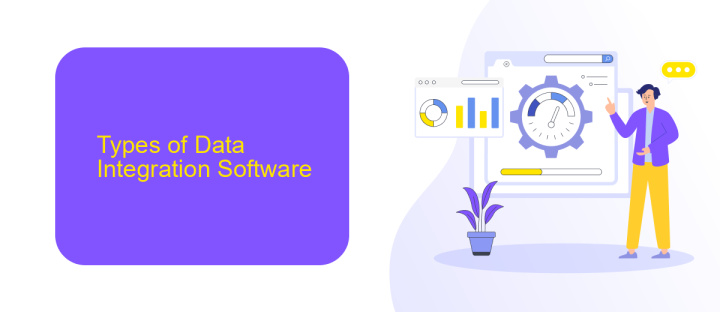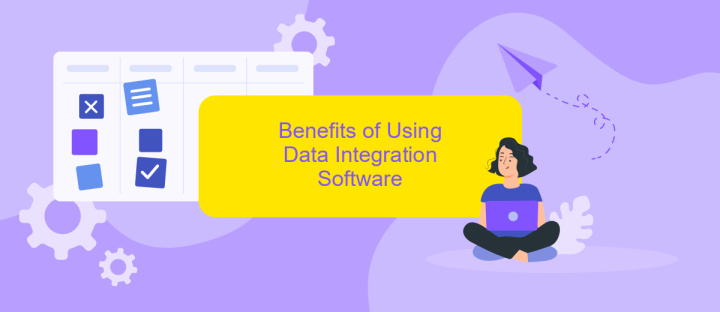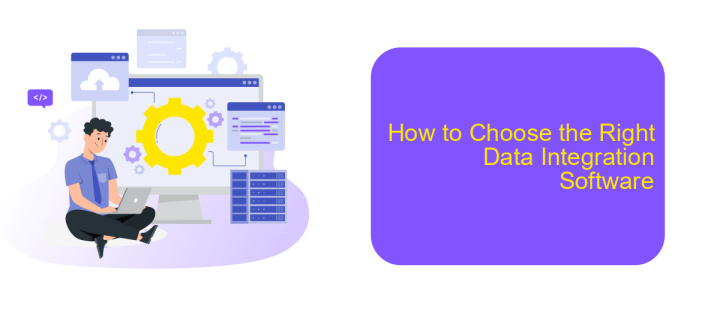Data Integration Software
In today's data-driven world, businesses rely on seamless data integration to make informed decisions and streamline operations. Data integration software plays a crucial role in combining data from diverse sources into a unified view, enhancing accessibility and accuracy. This article explores the importance, features, and benefits of data integration software, helping organizations achieve a cohesive data strategy.
Introduction
Data integration software plays a crucial role in modern businesses, enabling seamless data flow between disparate systems. By consolidating data from multiple sources, organizations can enhance their decision-making processes, improve operational efficiency, and gain a comprehensive view of their operations.
- Centralized data management
- Improved data accuracy and consistency
- Enhanced business intelligence and analytics
- Streamlined workflows and processes
- Reduced data silos
One notable service in this domain is ApiX-Drive, which simplifies the setup of integrations between various applications and services. With its user-friendly interface and extensive library of connectors, ApiX-Drive allows businesses to automate data transfers without requiring extensive technical expertise. This capability ensures that organizations can maintain data integrity and availability across all their platforms, leading to more informed decision-making and operational excellence.
Types of Data Integration Software

Data integration software can be categorized into several types based on their functionalities and use cases. ETL (Extract, Transform, Load) tools are widely used for extracting data from various sources, transforming it into a suitable format, and loading it into a target system. These tools are essential for data warehousing and business intelligence. Data replication software, on the other hand, focuses on copying data from one database to another, ensuring consistency and reliability across systems. Data virtualization tools allow users to access and query data without needing to know where it is physically stored, providing a unified view of data from different sources.
Another important category is API-based integration platforms like ApiX-Drive, which enable seamless integration of various applications and services. These platforms allow businesses to automate workflows by connecting different software systems through APIs, reducing manual effort and minimizing errors. Cloud-based integration services offer scalable and flexible solutions for integrating data across on-premises and cloud environments. Additionally, iPaaS (Integration Platform as a Service) solutions provide comprehensive integration capabilities, including data mapping, transformation, and orchestration, making them suitable for complex integration scenarios. Each type of data integration software serves specific needs and plays a crucial role in ensuring smooth and efficient data management.
Benefits of Using Data Integration Software

Data integration software offers numerous advantages to businesses by streamlining processes and enhancing data accuracy. By consolidating disparate data sources into a unified system, companies can achieve greater efficiency and make more informed decisions.
- Improved Data Quality: Integration software ensures that data from various sources is consistent and accurate, reducing errors and redundancy.
- Enhanced Productivity: Automating data integration tasks saves time and resources, allowing employees to focus on more strategic activities.
- Better Decision-Making: Access to comprehensive and real-time data enables businesses to make data-driven decisions quickly and effectively.
- Cost Efficiency: By reducing manual data handling and minimizing errors, companies can lower operational costs significantly.
- Scalability: Integration solutions like ApiX-Drive allow businesses to easily scale their operations by connecting multiple applications and data sources seamlessly.
Incorporating a service like ApiX-Drive can further simplify the integration process, offering a user-friendly platform to connect various systems without the need for extensive technical expertise. This not only accelerates implementation but also ensures that businesses can adapt quickly to changing data needs and market conditions.
How to Choose the Right Data Integration Software

Choosing the right data integration software is crucial for ensuring seamless operations and data consistency across your organization. Start by identifying your specific requirements, such as the types of data sources you need to integrate, the volume of data, and any compliance or security needs.
Next, evaluate the features offered by different software solutions. Look for tools that provide robust data transformation capabilities, real-time data synchronization, and scalability to grow with your business. It's also important to consider user-friendliness and the level of technical expertise required to implement and maintain the software.
- Assess compatibility with your existing systems
- Check for user reviews and case studies
- Evaluate customer support and training resources
- Consider the total cost of ownership, including licensing and maintenance fees
For businesses looking to simplify the integration process, services like ApiX-Drive can be invaluable. ApiX-Drive offers an easy-to-use platform that allows you to connect multiple applications without extensive coding, ensuring that your data flows seamlessly between systems.


Conclusion
In conclusion, data integration software plays a pivotal role in modern business operations, enabling seamless data flow and enhancing decision-making processes. By consolidating disparate data sources into a unified system, organizations can achieve greater efficiency, accuracy, and accessibility of their data. This not only streamlines workflows but also provides valuable insights that drive strategic initiatives and competitive advantage.
One such tool that simplifies the integration process is ApiX-Drive. It offers a user-friendly interface and robust functionality, allowing businesses to effortlessly connect various applications and automate data transfers. By leveraging services like ApiX-Drive, companies can reduce manual efforts, minimize errors, and ensure real-time data synchronization, ultimately optimizing their operational performance. As the demand for integrated data solutions continues to grow, investing in reliable and efficient data integration software becomes increasingly essential for sustained business success.
FAQ
What is Data Integration Software?
Why is Data Integration important for businesses?
How does Data Integration Software work?
Can Data Integration Software be automated?
What are the key features to look for in Data Integration Software?
Strive to take your business to the next level, achieve your goals faster and more efficiently? Apix-Drive is your reliable assistant for these tasks. An online service and application connector will help you automate key business processes and get rid of the routine. You and your employees will free up time for important core tasks. Try Apix-Drive features for free to see the effectiveness of the online connector for yourself.

